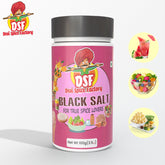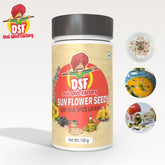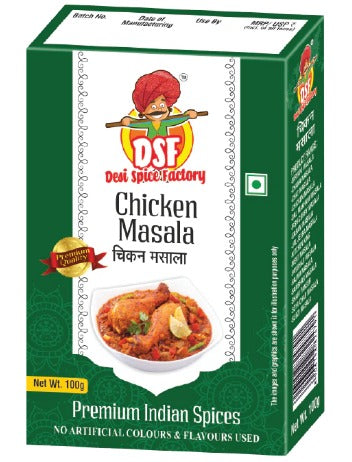
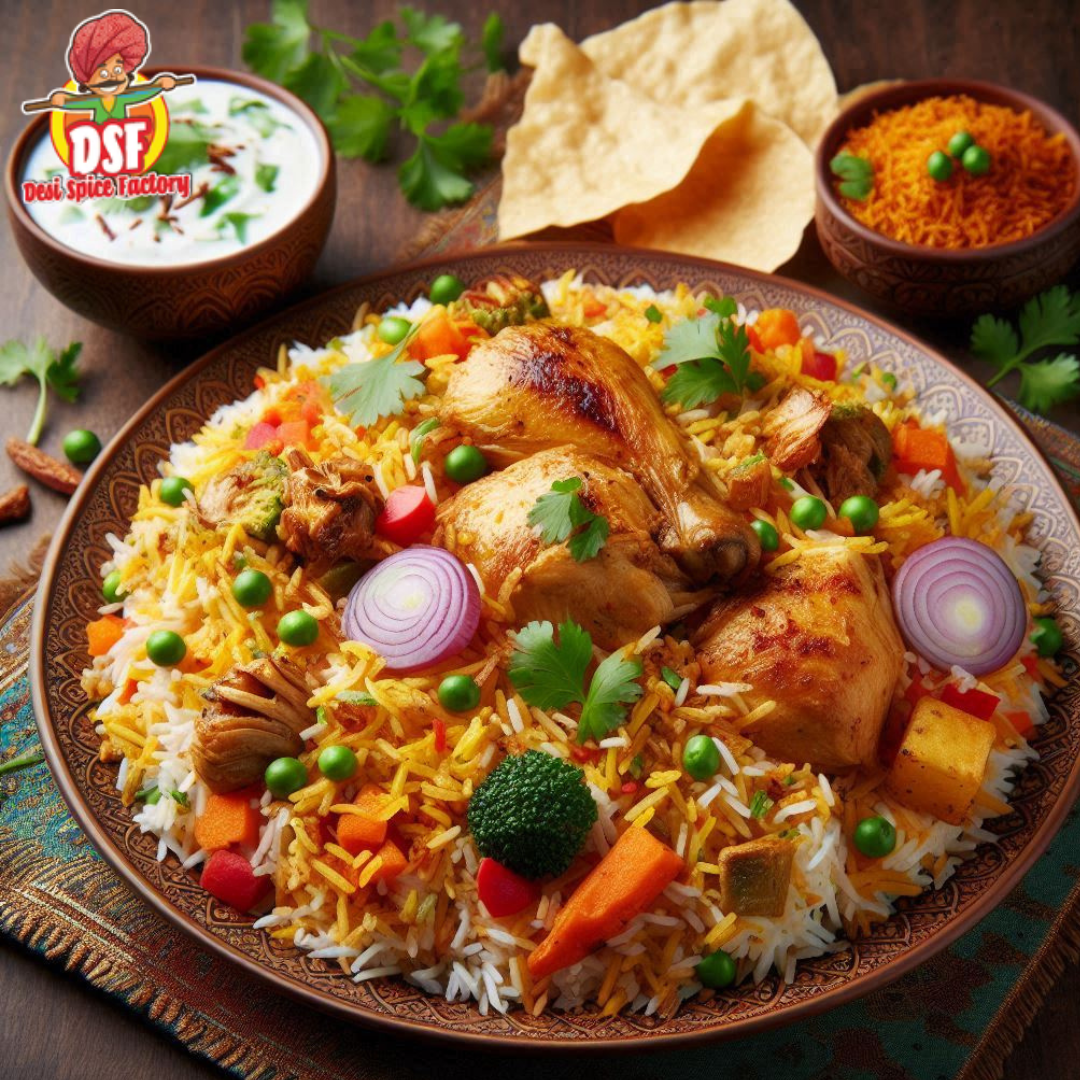
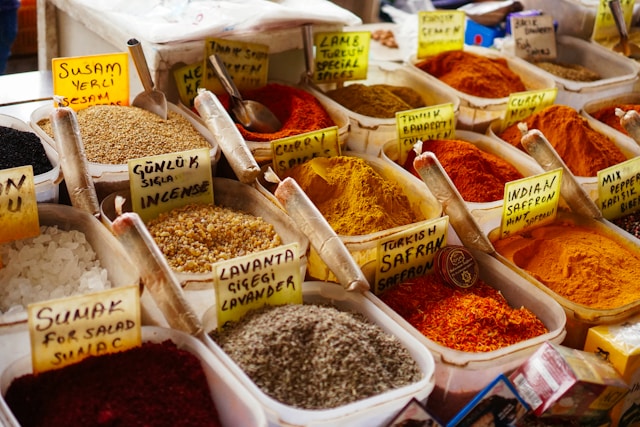

Tangy Twists & Spicy Kicks: Must-Have Indian Spices For Every Kitchen
Ever wondered what makes Indian food so irresistibly scrumptious? Is it the rich flavourful juicy fragrant biryani, the hot tangy samosa with a hot cup of masala tea, or the street-style chaat that leaves your taste buds dripping for more? Ah! Drooling already right?
Well, the answer to this secret is very simple. “Indian spices!”, is the foundation of Indian cooking, combining different unique flavours. They are the must-have spices for the Indian kitchen—whether you’re in India or any corner of the world. These spices are not only rich in adding flavour or colour to your dishes but also have added health benefits.
Intrigued right? Still, wondering what other common Indian spices not only add heat and tang to your dishes but also make them rich with a touch of tradition and elevate your taste buds? Don’t you worry, here is a list of 10 must-have spices that you will find in every Indian Kitchen’s Indian spice box (Masala Dabba).
1. Turmeric, a.k.a, Haldi
Turmeric is grown in Andhra Pradesh, Maharashtra, and Tamil Nandu. It is one of the most essential Indian spices that give creamy curries their rich golden appearance and its warm, earthy flavour with a slightly bitter undertone. This makes the dish lip-smacking. Beyond adding colour, ground turmeric health benefits are impressive. It is rich in antioxidant and anti-inflammatory properties that help in relieving inflammation and stiffness in the joints of the body. These benefits make it an ideal addition to your daily meals.
2. Cumin Seeds, a.k.a, Jeera
Cumin Seeds grow in the states of Gujarat and Rajasthan. Indian cuisine benefits from the nutty, spicy flavour of cumin seeds. These are usually toasted in hot oil to release essential oils and aroma. They are added to curries, lentils, and rice to make them more flavourful. This process is called “tampering” a.k.a Tadka. It helps maintain your stomach health and aids in digestion. Thus, a happy gut results in better digestion and metabolism and happy glowing skin.
3. Coriander Seed, a.k.a, Dhania
Coriander seeds are cultivated in Gujarat, Rajasthan, and Madhya Pradesh. It is consumed either in the form of seeds or powder. These are extensively used in Indian cuisines. Coriander seeds or powder add a warm, zesty flavour that elevates the whole dish. It benefits blood sugar regulation, protects skin from UV ray damage, and enhances skin health.
4. Asafoetida, a.k.a, Hing
Asafoetida is a dried and powdered form of tree resin. It is sourced from Himachal Pradesh and a few parts of Kashmir. It is a necessary spice that is typically added as one of the first aromatics to hot oil or ghee. Its strong raw scent gradually fades into a musky one, giving lentils, beans, and vegetarian curries a smooth, savoury flavour. It is known to be the digestive system's hero—it keeps your tummy feeling good and helps minimise bloating.
5. Kashmiri Red Chilli Powder, a.k.a, Laal Mirchi Powder
For those who love to consume food with an added overpowered spicy touch, this is your go-to spice. It not only adds a beautiful red colour to your dish but also is rich in Vitamins. They help build stronger immunity and maintain energy levels. These also benefit the digestive system and brain health. It is produced in the Kashmir Valley and parts of Himachal Pradesh. It is mild but keeps you warm from within especially when winter kicks in.
6. Black Mustard Seeds, a.k.a, Rai
These tiny seeds are like a powerhouse of flavours when added to Indian cuisine. They are mainly cultivated in Rajasthan, Uttar Pradesh, and Madhya Pradesh. Once toasted in hot oil or ghee these seeds pop and release tangy yet sharp flavours. Hence, making it ideal especially for South Indian cuisines like sambhar or rasam. These black mustard seeds in Indian cuisine help regulate cholesterol levels and aid in cardiovascular health.
7. Cloves, a.k.a, Laung
Cloves are aromatic flower buds found especially in Nilgiri Hills. They have a unique yet powerful sweet, spicy, and slightly bitter flavour, that perfectly blends into both savoury and sweet dishes. Cloves in Indian dishes are a well-balanced flavourful spice. It has antibacterial and analgesic qualities that are useful in treating digestive problems and tooth pains.
8. Cardamom, a.k.a, Elaichi
Cardamom is known as the “Queen of Spices” that slips its way into curries and spiced tea (Masala Chai). It adds its sweet, floral, aromatic flavour to any kind of savoury or sweet dish. These are found in the Western Ghats of Kerala, Karnataka, and Tamil Nadu. It is commonly used to aid digestive benefits and is also used as a natural breath freshener.
9. Saffron, a.k.a, Kesar
Saffron is exclusively grown in the Kashmir Valley of Jammu and Kashmir. It is the most expensive, luxurious, and royal spice in the world. Saffron in any cuisine brings glory to the dish. It has a sweet, floral flavour that can turn any dish into a golden masterpiece. It is a powerful antioxidant that can help manage blood sugar levels, relieve anxiety, and improve bone strength.
10. Garam Masala
Garam Masala is typically a blend of all the Indian cooking spices that have been mentioned above excluding Kesar. A lot of tangy or spicy Indian dishes usually incorporate Garam Masala. It adds warmth and depth of flavours to any kind of savoury dish.
Conclusion
Whether you are an Indian homemaker or an international food lover wanting to recreate authentic Indian flavours in your kitchen, you will require these must-have Indian spices. So, whip up anything from mild curries to fiery stir-fries with Desi Spice Factory(DSF). They sell the best spices because they don't use any added preservatives. Ready to get your masala dabba organised? Let the cooking adventure begin!


